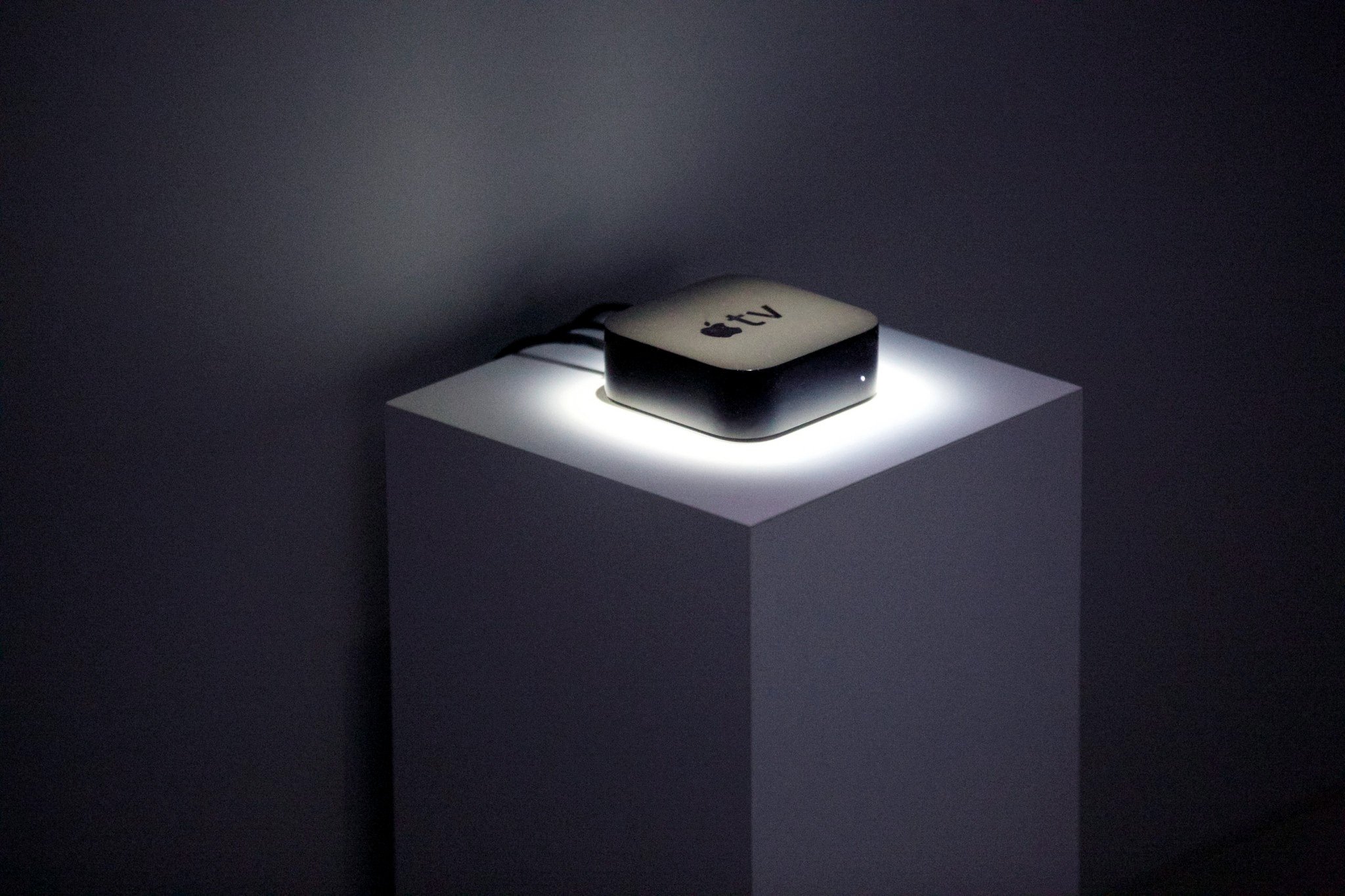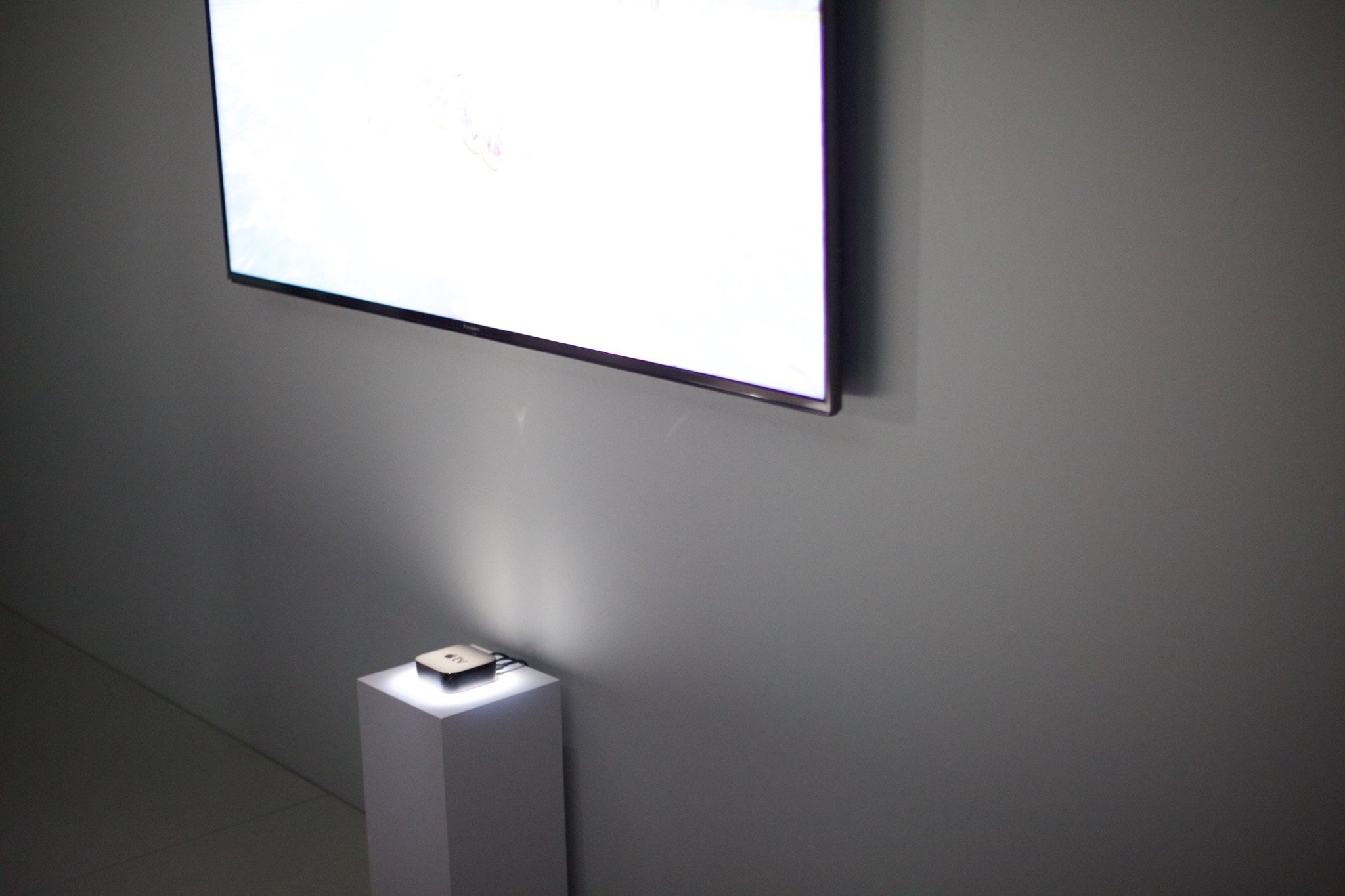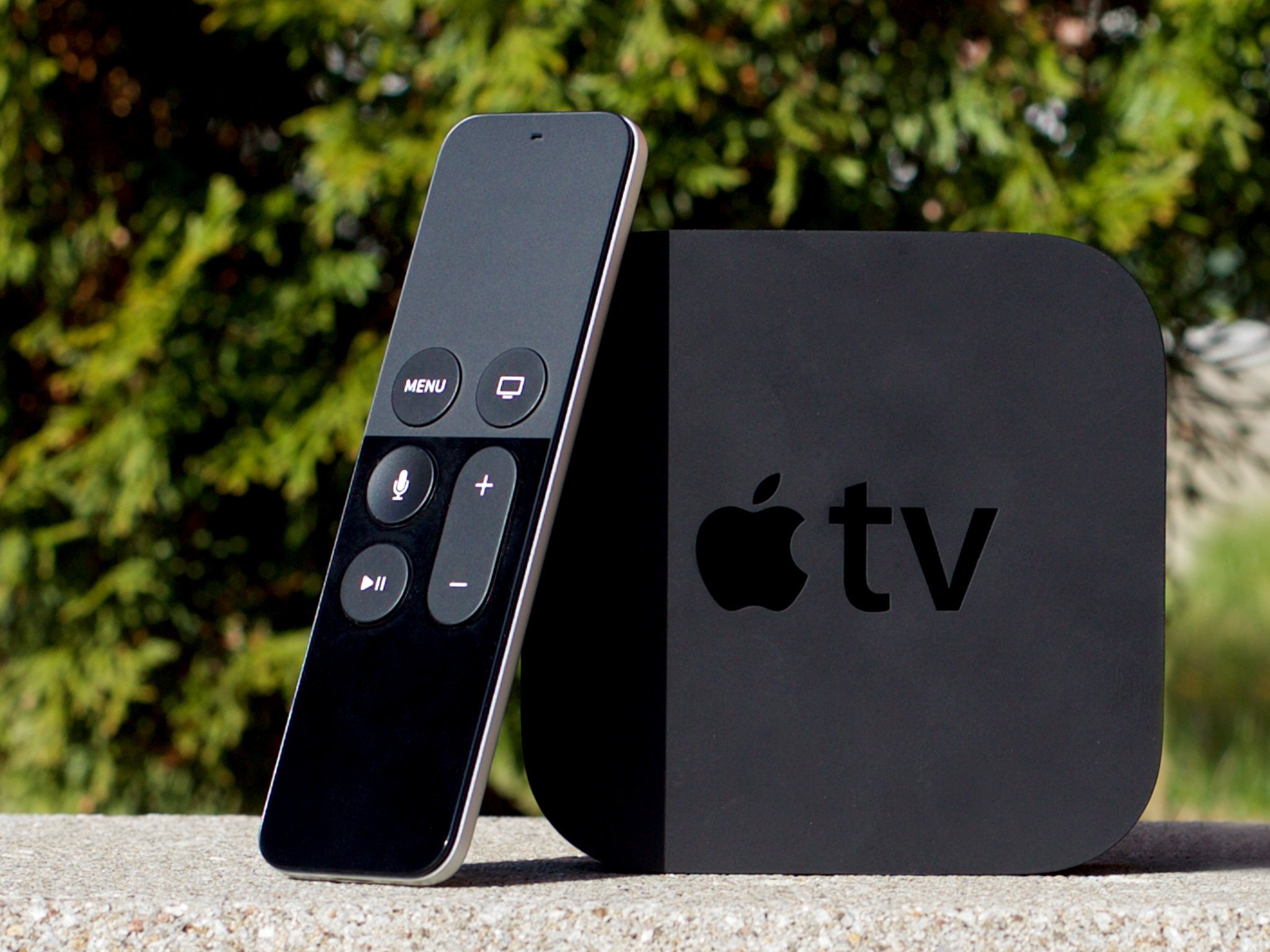Apple TV hands-on preview

I'm a cord cutter who lives on the Apple TV and watches iTunes, Netflix, and AirPlay video constantly. It's a huge part of my Apple experience, and it hadn't been updated since 2012. Until now.
The original Apple TV ran a lobotomized version of OS X, had a hard drive, and synced all it's content from the iTunes desktop. Then, in 2010, it switched to running iOS, got NAND Flash storage, and began streaming from the cloud. The new Apple TV keeps that same foundation but brings it into the present.
tvOS
Like Apple Watch, Apple TV is getting it's own system-level branding: tvOS. It has the same plumbing as iOS and watchOS but system and presentation layers all its own. And when you're dealing with a 10-foot interface—something you sit away from and interact with from afar—it's those front-facing layers that really matter.
Gone is the old, dark, dead design and in its place is a new, bright, lively interface that better fits the post iOS 7 aesthetic. Backgrounds blur and artwork, when chosen, shifts in virtual 3D space like layered paper. It's charming. As are the video screen savers that, instead of animating static images in space like they used to, now show the world in motion.
Movies and TV are now clearly labeled as "iTunes" while Music has become Apple Music. The constraints of the Apple TV headboard actually look to make the Music app flatter, at least at first glance.
Like Apple Watch, there's not sign of Safari and apparently none of WebKit in the frameworks either. Browsing on the TV would have been nice, but it's a sign that web data has moved beyond one app and, potentially, into every app.
Apple hasn't forgotten about accessibility though. VoiceOver and all the now-standard iOS-style options are present and accounted for.
Master your iPhone in minutes
iMore offers spot-on advice and guidance from our team of experts, with decades of Apple device experience to lean on. Learn more with iMore!
The remote

The remote is bigger now, with a touchpad area at the top and menu and home buttons in the middle, and Siri, play/pause, and volume buttons at the bottom. It's not Wiimote big or heavy, but it does include core motion detection technologies like an accelerometer and gyroscope. And yes, there's a wrist strap to prevent you accidentally losing grip and launching it, shuriken-style, across the room and into the TV. It recharges via Lightning port but lasts months at a time on a charge.
The touch pad feels terrific. I've sometimes over or undershot with the Apple Remote app for iPhone but with the new hardware remote I was able to get to precisely the icon I wanted every time. I was only able to try a couple of games, but that included things like swinging the remote and driving with it, and the feeling was very connected and very natural. There was no delay or disintermediation.
You can't currently pair multiple Apple remotes to a single Apple TV so for multiplayer games you need to get and use Apple-certified game controllers. I hope we get multiple Apple remote support eventually, because they're cool, but things like battling relatives for Siri control of the living room might need to get figured out first.
Gamepads
If you already have MFi game controllers for your iPhone or iPad, they'll work with the new Apple TV. They've had a rough start since they were introduced, though, with quality varying wildly from vendor to vendor. Hopefully, a higher profile with Apple TV will help change that. I believe Apple was using SteelSeries in the demo pods and those felt and worked well.
You can navigate the entire Apple TV interface with a controller, far as I could tell, which makes it convenient. Since the apple remote can do things the controllers can't and vice-versa, it'll be interesting to see which developers embrace.
Apps + games

That's right: developers. Apple TV is now a platform and tvOS can run apps just like iOS and watchOS. Like the systems themselves, they're nearly identical when it comes to frameworks but different when it comes to interfaces. Apple TV apps are meant for the Apple TV.
Unlike watchOS, they're also apps unto themselves. There's an App Store directly on the Apple TV, and that's where you download them from. The benefits of being plugged into AC power and having lots of resources available. Well, relatively speaking. There's 2 GB of RAM inside and 32 GB or 64 GB options of storage.
I haven't had a chance to look into it yet, but it sounds like native games won't be able to use a ton of that space, though, and will have to rely heavily on on-demand resources (part of iOS 9 app thinning) to dynamically add and remove content like levels, cut scenes, tutorials, etc. from the cloud.
No 4K
That all runs on an Apple A8 processor. That's probably to keep costs down relative to an Apple A9, and because pushing around 1080p, especially with Metal and Apple's other graphics technologies, doesn't even require an Apple A8X.
Since there's no iTunes 4K yet, 2160p vs. UHD is still annoying, high dynamic range still needs to be considered, and a lot of people lack the bandwidth needed to stream 4K consistently, that Apple doesn't have a 4K story isn't surprising. It is disappointing from a video enthusiast perspective, however, and in terms of future-proofing the platform.
Siri

Siri on the Apple TV is amazing. The sequential inference works incredibly well to find content, letting you ask for something broad then narrow it down, shift it around, and find exactly what you want. Natural language means you can find things like guest stars in specific TV episodes not only easily but intuitively. Likewise control. "What did she say?" jumping you back several seconds and adding subtitles is genius.
So is requiring a button push to invoke Siri. It means you won't accidentally activate your TV when you mean to activate your watch, phone, or tablet, and it means the Siri remote gets terrific battery life. It also means you never have to worry about Apple eavesdropping on you in your living room. That's huge for privacy. Siri isn't listening unless you explicitly want it to be.
October
The Apple TV isn't shipping until October, and I only got to spend about 30 minutes in the various demo areas, but I like what I saw. When it ships, following on the new iPod touch in July, it'll mean our long iTunes device drought will finally be over.
And now that Apple TV is a platform, iTunes will need to keep the updates coming. That's the best news of all.

Rene Ritchie is one of the most respected Apple analysts in the business, reaching a combined audience of over 40 million readers a month. His YouTube channel, Vector, has over 90 thousand subscribers and 14 million views and his podcasts, including Debug, have been downloaded over 20 million times. He also regularly co-hosts MacBreak Weekly for the TWiT network and co-hosted CES Live! and Talk Mobile. Based in Montreal, Rene is a former director of product marketing, web developer, and graphic designer. He's authored several books and appeared on numerous television and radio segments to discuss Apple and the technology industry. When not working, he likes to cook, grapple, and spend time with his friends and family.

